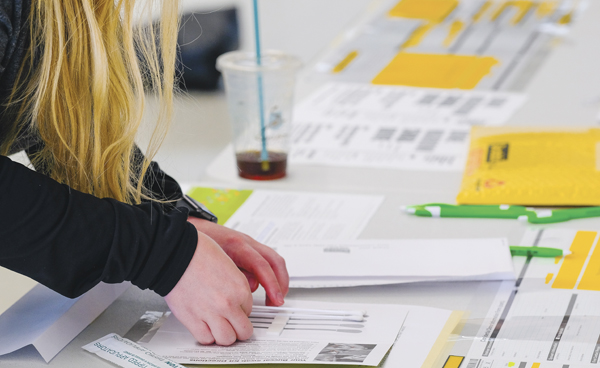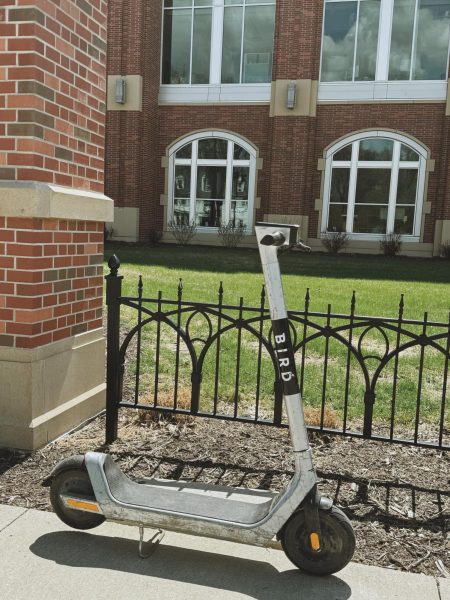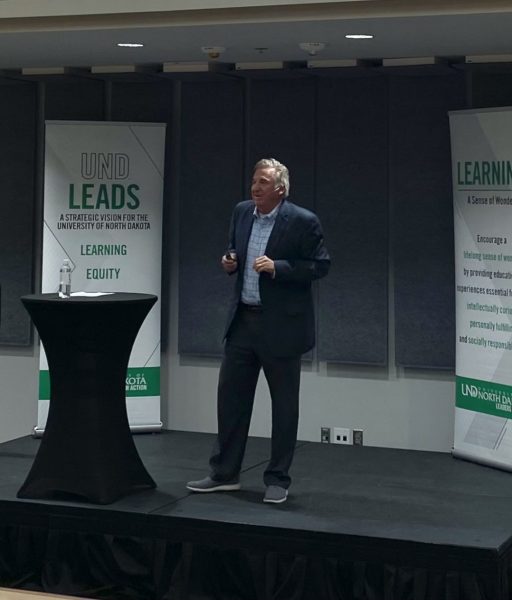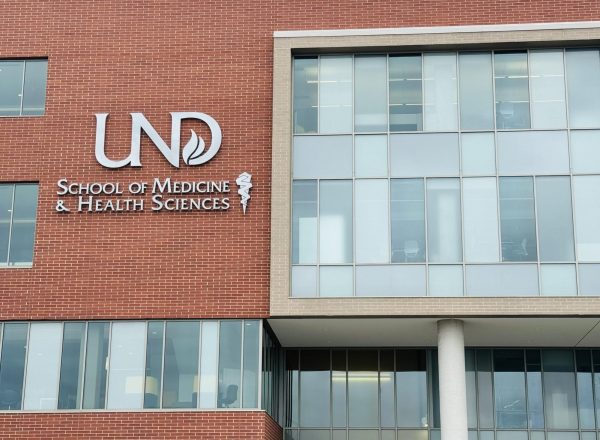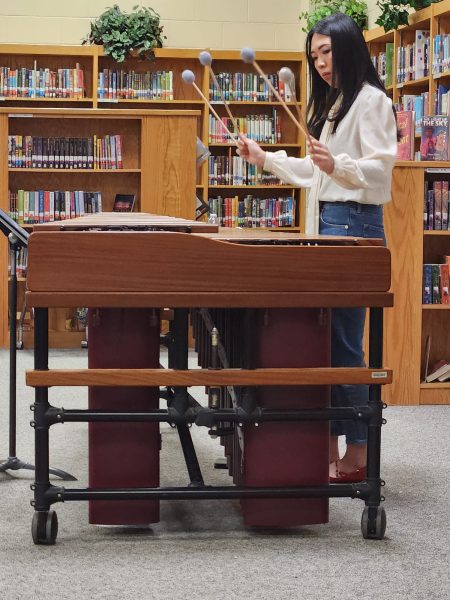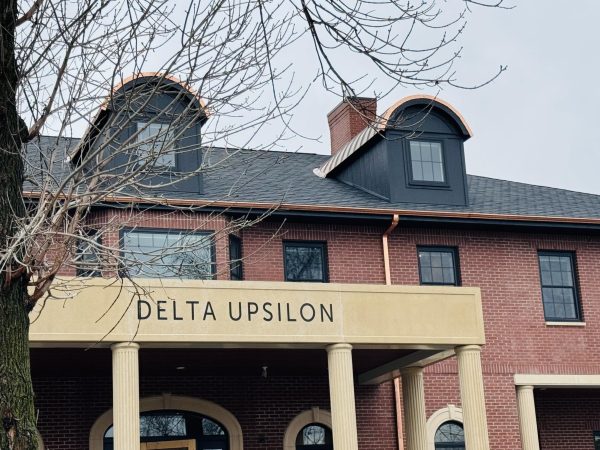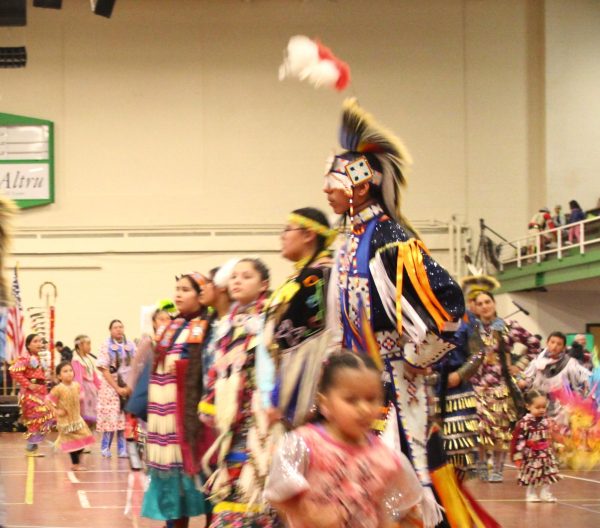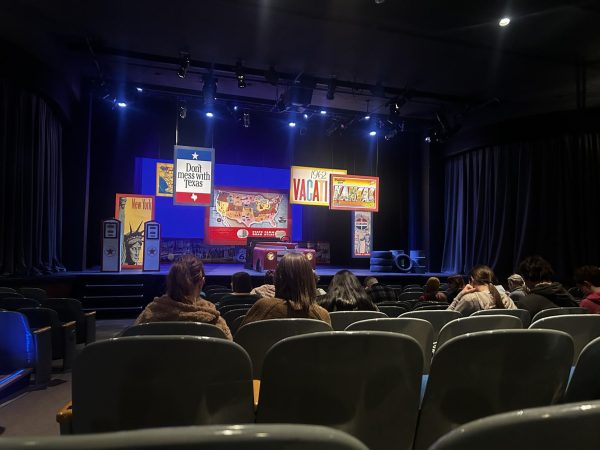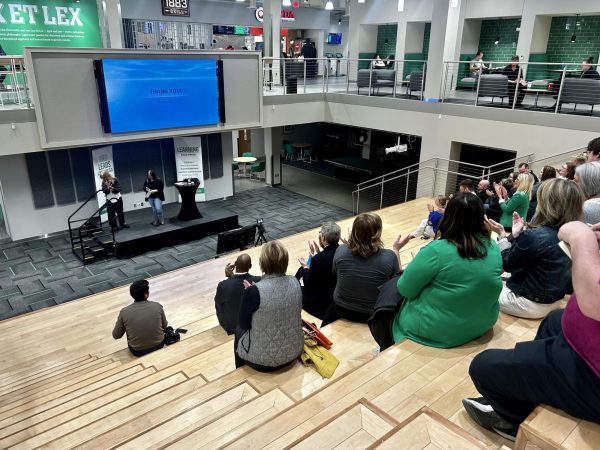Be the Match
Saving lives

Paul Samson (left), medical lab science education specialist, and Shanalee Mountain (right), medical student, swab their mouths during a bone marrow volunteer drive on Wednesday, April 26, 2017 at the Medical School.
May 3, 2017
Last week, students had the opportunity to join the “Be the Match” registry and potentially provide a bone marrow transplant to one of the thousands of people in need. Hosted by the Medical Laboratory Science Club and the Undergraduate Medical Association, a Bone Marrow Swab Drive was held on Monday April 24 and Wednesday the 26.
There is an extensive list of leukemia and sickle cell anemia patients in the United States who are in need of a bone marrow transplant in order to survive. However, most of them don’t have fully matched donors in their family. “Be the Match” is an organization that works to create a registry of potential donors in the hopes compatible bone marrow and tissue types can be found for all those people on the waiting list.
For the purposes of this event, people ages 18-44 who wish to donate just had to sign up and participate in a cheek swab test. The test results all get sent in to “Be the Match” and are added to the registry.
“Most people don’t get matched, or it’s ten or fifteen years later that they get a call,” Vice President of the MLS Club, Danielle Germundson, said.
It takes a very specific match to complete a successful bone marrow transplant, which contributes to the length of the waiting list for those in need. Lucky patients find a match within their family, but many people search for years for an eligible donor.
If a donor receives a call back, they will go to their local hospital to take a blood test, just to be absolutely sure that the donor and patient are matched. From there, doctors will conduct one of two processes. Peripheral blood stem cell donation involves collecting stem cells from the donor’s blood and transferring them over to the patient. Marrow donation is a more complicated process in which bone marrow is surgically extracted from the donor’s hip bone.
Germundson explained that around 50 people signed up for the drive. 30 percent of donors have to undergo an invasive surgery while the remaining 70 percent are given a substance. The process of bone marrow donation is a much longer and more personal process than blood donation, so this has been a great turnout.
“It’s more than donating blood because it changes people’s lives and it can add many years to their lifespan,” Germundson said.
Members of the “Be the Match” registry make a commitment to the possibility that one day a match will be found and they will be called in to donate. For that reason, less people may be inclined to sign up compared to doing a blood donation, but one student described it as being a more fulfilling action.
This was the first year that the MLS Club have conducted a bone marrow drive. 50 participants is pretty good for the first time. Germundson and the MLS Club hope to do it again next year and maybe make the drive an annual event.
You could be a match. The waiting list for bone marrow donation has thousands of people in need of help. Leukemia patients and those with other diseases die every year; deaths that could be prevented by a marrow transplant. The only cost to a test taker is time.
It doesn’t hurt to take the test, and somewhere down the road you could be someone’s hero. Hopefully, Be the Match and the MLS Club will put on a drive next year and for years to come, and how the UND community could help save lives.
Ben Godfrey is a staff writer for The Dakota Student. He can be reached at [email protected]


